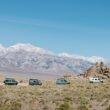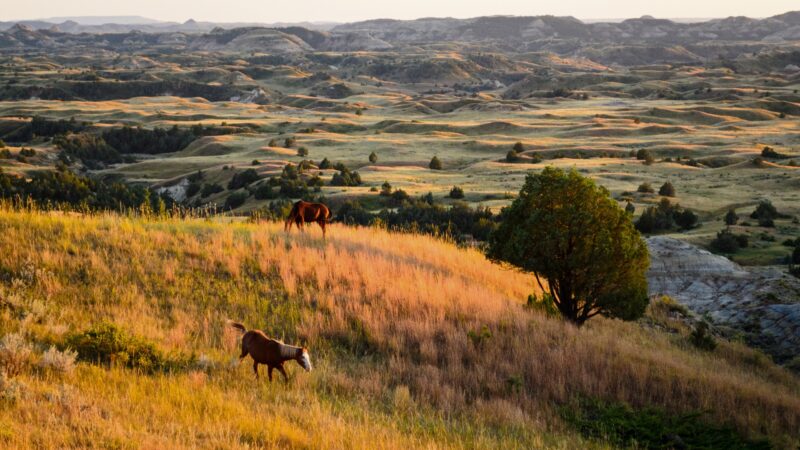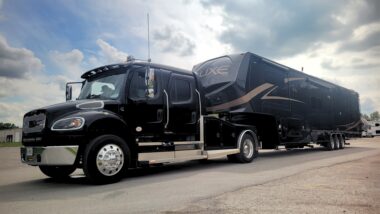Table of Contents Show
When you think of North Dakota, what comes to mind? Perhaps nothing. It’s not a state that’s really well-known for anything. However, President Theodore Roosevelt found solace here after his wife and mother’s deaths, and we think you can also find peace and tranquility in its stunning landscape.
Today, we’re sharing more about the national park named in honor of this great President who altered the course of conservation. While it may not be the most popular destination, we believe Theodore Roosevelt National Park is well worth visiting. Let’s dive in!
Where Is Theodore Roosevelt National Park?
Theodore Roosevelt National Park is in western North Dakota. The south unit visitor center sits on I-94 in Medora, about 30 minutes from the Montana border.
Bismarck, the state capital, is about two hours east of the visitor center. The north unit visitor center sits along Highway 85, about 53 miles north of Belfield and 15 miles south of Watford City.
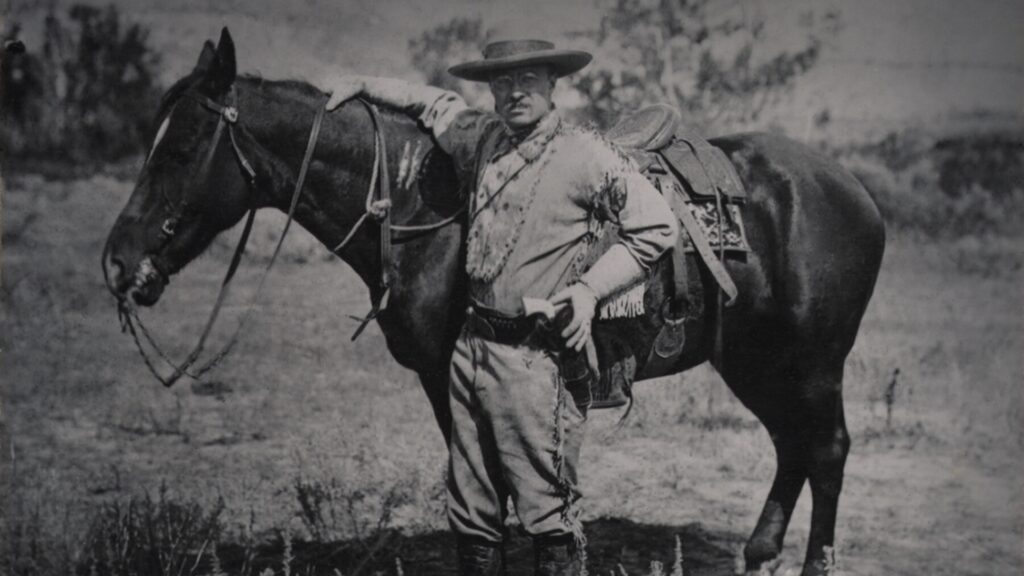
When Did Theodore Roosevelt National Park Become a National Park?
On April 25, 1947, President Truman signed a bill that created Theodore Roosevelt National Memorial Park. At first, this only included the South and Elkhorn Ranch Units lands.
A year later, the North Unit was added to the park. The park’s purpose was to memorialize the 26th president for his contributions to protecting our national treasures.
President Carter signed a bill on November 10, 1978, changing the memorial park to Theodore Roosevelt National Park. Today, it covers over 70,000 acres and is home to diverse wildlife, including bison, feral horses, elk, golden eagles, wild turkeys, and great-horned owls. In 2022, approximately 668,000 people visited this special place.
Pro Tip: To learn more about the different types of national park units and their designations, read Decoding the National Park System.
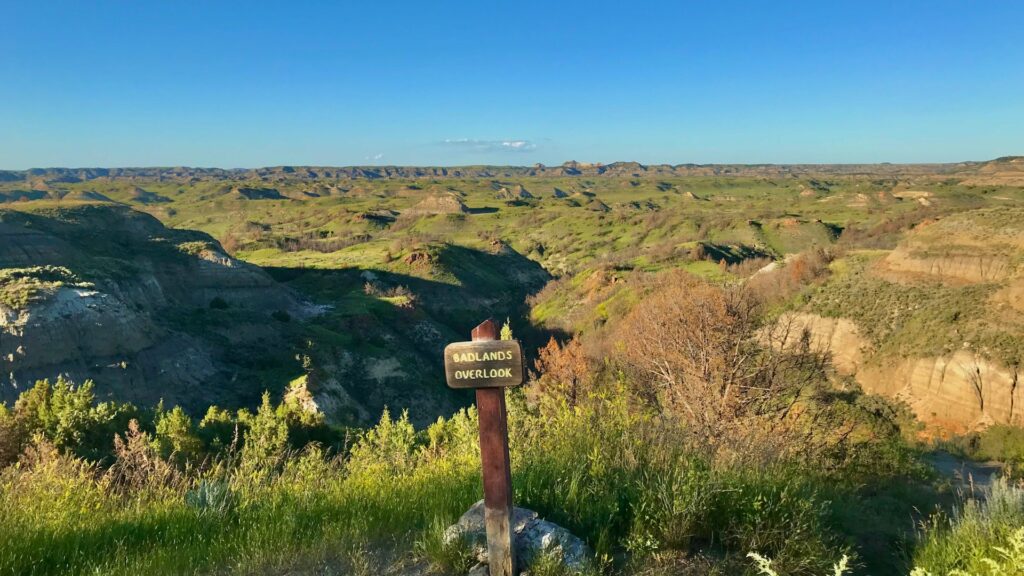
What’s So Special About Theodore Roosevelt National Park?
The multi-colored rock layers look more like the Painted Desert in Arizona than the Badlands. Wildflowers, prairie grasses, blooming cacti, and juniper trees are just a few of the plants that call Theodore Roosevelt National Park home. Herds of bison roam freely, and prairie dogs establish their towns in the wilderness.
Because this national park is less visited than others, you rarely find crowded parking lots or hiking trails. Visitors feel connected to the natural world here, enjoying stunning scenic views.
Interpretive exhibits and programs also help educate visitors about the 26th president and his contributions to preserving our lands. His adventures in this remote and unfamiliar place changed him and thus shaped a national conservation policy.
3 Most Popular Attractions in Theodore Roosevelt National Park
A little less than half of Theodore Roosevelt National Park is designated wilderness. But much of the land is rugged and remote.
Because of the setting, there aren’t many things to do here besides appreciate the scenic beauty and natural surroundings. Here are our favorite things to do in this North Dakota park.
1. Drive the Scenic Drives
Driving through the North and South Units is the best way to experience Theodore Roosevelt National Park. The North Unit’s scenic drive is 14 miles, making it 28 miles roundtrip.
Plan to spend at least 75 minutes enjoying the views. You’ll travel from the bottom of the badlands up the canyon to River Bend Overlook. You continue along the rim of the badlands to Oxbow Overlook at the road’s end before turning back.
The South Unit’s scenic drive is 48 miles roundtrip, so you’ll want at least two hours to complete it. This section of the national park is the most visited, so you’ll likely encounter more traffic, but not heavy. The road winds through the badlands and has several overlooks and hiking trails.
2. Enjoy the Wildlife
President Roosevelt came to this area of North Dakota to hunt. He loved the chase but also valued wildlife and sought to preserve the land and animals. As you take the scenic drives, be on the lookout for bison, elk, feral horses, mule deer, and prairie dogs.
Always keep your distance and use binoculars for safe viewing. Keep your pets in the car or leashed at all times.
If you’d like to see one of the prairie dog towns, we suggest hiking the Buckhorn Trail. It’s a 1.5-mile trail in the North Unit and starts at the Caprock Coulee Trailhead. Even though prairie dogs look cute and innocent, they’re still wild, so give them plenty of space.
Pro Tip: Check out Wildlife Viewing Tips Everyone Should Know!

3. Hike the Caprock Coulee Nature Trail
Another popular trail in Theodore Roosevelt National Park is the Caprock Coulee Nature Trail. It’s an easy-to-moderate 1.5-mile hike in the North Unit that takes you through the badlands terrain and dry washes.
If you’d like to hike the loop rather than the out-and-back trail, it’s a 4.4-mile trail. Keep your eyes peeled for snakes on the trail and wildlife in the distance. Pets aren’t permitted on this particular hike.
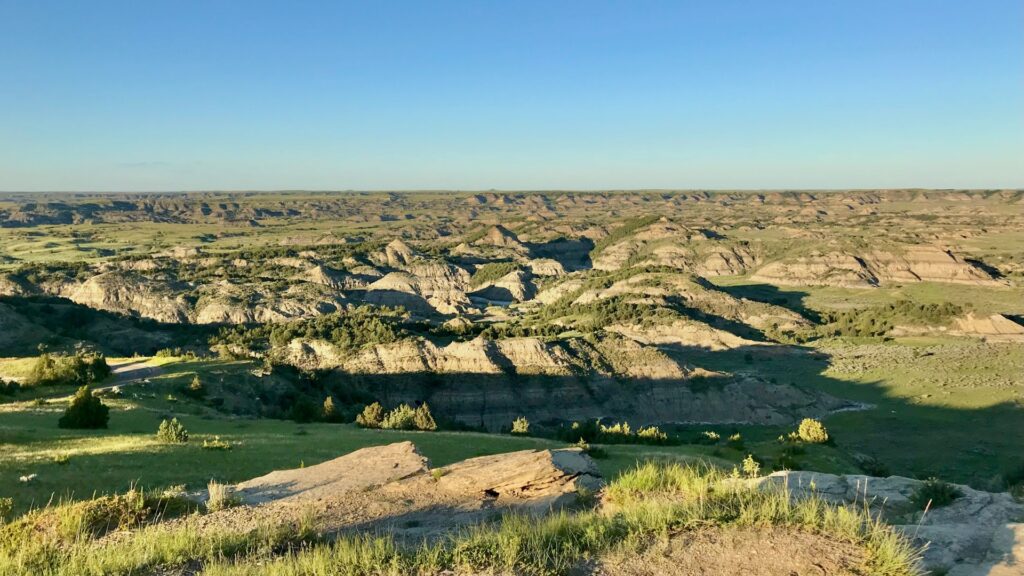
The Elkhorn Ranch Unit sits in the middle of the national park. While there are no facilities, it’s worth visiting to experience the area that President Roosevelt chose as his home ranch after the deaths of his wife and mother. It’s a solemn, remote place. But you can visit the cabin site and read exhibits about Roosevelt’s time here.
However, discuss road conditions with rangers at the visitor center before venturing out. The last three miles sometimes require a 4-wheel drive and a high-clearance vehicle.
Best Place for Camping in Theodore Roosevelt National Park
There are no hookup campsites at Theodore Roosevelt National Park, but there are two campgrounds if you enjoy primitive camping. Cottonwood Campground is in the South Unit, and Juniper Campground is in the North Unit.
There are also some beautiful dispersed camping locations nearby. You can find more information about camping in the Little Missouri National Grassland on the U.S. Forest Service website. On Campendium, the Scoria Pit Dispersed Camping site is highly recommended.
If you prefer a place with hookups, Sully Creek State Park offers electricity and water for $25 per night. It’s just three miles south of the South Unit Visitor Center. Red Trail Campground is a nearby option that offers full hookups. It’s less than a mile from the visitor center in Medora and costs $48 per night.

Is Visiting Theodore Roosevelt National Park Worth It?
While Theodore Roosevelt National Park may be less visited than places like Mount Rushmore, Badlands National Park, or Devils Tower, don’t skip out on a trip to North Dakota. It’s worth it to take a day to drive another 300 miles north from the Badlands in South Dakota.
Spend a few days enjoying the same scenery President Roosevelt once found as solace. Enjoy the abundant wildlife and smaller crowds. Allow yourself to disconnect and embrace this beautiful North Dakota land.
Have you ever visited Theodore Roosevelt National Park?


